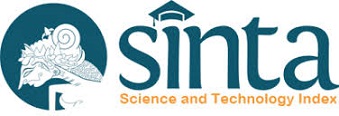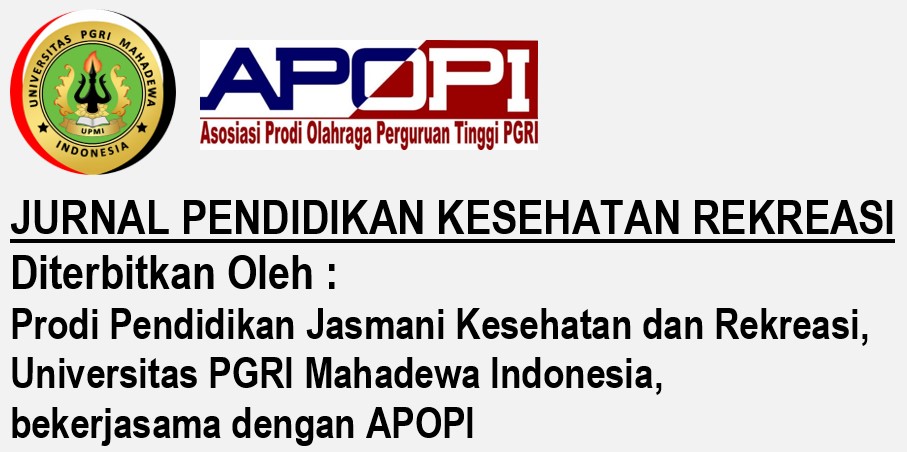Bagaimana Intervensi Gaya Hidup Aktif melalui Aktifitas Fisik pada Anak? Sebuah Tinjauan Sitematis
DOI:
https://doi.org/10.59672/jpkr.v10i1.3480Keywords:
gaya hidup aktif, aktifitas fisik, usia anakAbstract
Gaya hidup aktif pada anak merupakan suatu pendekatan yang menekankan pentingnya melibatkan anak dalam kegiatan fisik secara teratur. Gaya hidup aktif ini mencakup berbagai aspek, termasuk partisipasi dalam olahraga, bermain di luar ruangan, dan aktivitas fisik sehari-hari. Penelitian ini bertujuan untuk mengevaluasi dampak intervensi gaya hidup aktif melalui aktivitas fisik pada perkembangan anak-anak. Melalui sebuah tinjauan sitematis terhadap artikel penelitian yang relevan, kami menganalisis pengaruh intervensi ini pada berbagai aspek, termasuk keterampilan motorik, fungsi kognitif, kesehatan, dan perilaku anak-anak. Pencarian untuk penelitian ini menggunakan database Science Direct dengan subjek area pisikologi. Dalam penelitian ini mengikuti pedoman Preferred Reporting Items for Systematic Reviews and Meta-Analyses (PRISMA). Setelah kriteria eksklusi, hanya 5 artikel yang masuk kategori. Temuan utama menunjukkan bahwa campur tangan yang melibatkan keterlibatan dalam aktivitas fisik secara teratur, terutama yang terstruktur, memberikan kontribusi positif terhadap pengembangan keterampilan motorik kasar dan halus pada anak-anak. Aktivitas fisik terbukti sebagai faktor kunci dalam mendukung perkembangan motorik dalam jangka panjang. Selain itu, terdapat hubungan positif antara aktivitas fisik dan fungsi kognitif pada anak-anak. Oleh karena itu bahwa berpartisipasi dalam aktivitas fisik, terutama pada tingkat intensitas tertentu, dapat meningkatkan kemahiran dalam kefasihan kognitif, orisinalitas, dan fleksibilitas kognitif.
Downloads
References
Adhe, K., Ardha, M., Yang, C.-B., Khory, F., Harianto, T., & Putra, K. (2018). The Implementation of Physical Fitness Learning Module in Kindergarten. https://doi.org/10.2991/icei-17.2018.41
Aguiar, D. K. de, Tymms, P. B., Koslinski, M. C., Araújo, C. G. S. de, & Bartholo, T. L. (2021). Cognitive Development and Non-Aerobic Physical Fitness in Preschoolers: a Longitudinal Study. Lecturas: Educación Física y Deportes, 26(281), 21–42. https://doi.org/10.46642/efd.v26i281.2860
Amriyanto, D. A., Warsono, W., & Prasetyo, K. (2018). Application of Know Want Learning How “KWLH” Techniques to Improve Activities and Learning Outcomes of the Social Subject. https://doi.org/10.2991/icei-18.2018.112
Anisah, D., Kamidi, A., Tuasikal, A. R. S., & Suroto, S. (2020). Permainan kids athletics sebagai stimulasi kemampuan motorik kasar anak sekolah dasar kelas v dan vi. Gelanggang Pendidikan Jasmani Indonesia, 4(1). https://doi.org/10.17977/um040v4i1p66-72
Antony, B., Jones, G., Jin, X., & Ding, C. (2016). Do early life factors affect the development of knee osteoarthritis in later life: A narrative review. In Arthritis Research and Therapy (Vol. 18, Issue 1). https://doi.org/10.1186/s13075-016-1104-0
Athaya, H., Dewantara, J., Husein, M., Taiar, R., Malek, N. F. A., & Shukla, M. (2023). Analysis of physical fitness in students: a comparative study based on social status. Tanjungpura Journal of Coaching Research, 1(3), 71–78. https://doi.org/10.26418/tajor.v1i3.66542
Chen, K., & Phipps, S. (2021). “Why can’t you sit still?”The effect of daily physical activity on childhood inattention/hyperactivity and the educational gender gap. Social Science and Medicine, 284, 114232. https://doi.org/10.1016/j.socscimed.2021.114232
Cohen, K. E., Morgan, P. J., Plotnikoff, R. C., Callister, R., & Lubans, D. R. (2015). Physical activity and skills intervention: SCORES cluster randomized controlled trial. Medicine and Science in Sports and Exercise, 47(4), 765–774. https://doi.org/10.1249/MSS.0000000000000452
Dapp, L. C., Gashaj, V., & Roebers, C. M. (2021). Physical activity and motor skills in children: A differentiated approach. Psychology of Sport and Exercise, 54, 101916. https://doi.org/10.1016/j.psychsport.2021.101916
Dede Pebriandi Sihotang, & Novita. (2021). Pengaruh latihan circuit training untuk meningkatkan kesegaran jasmani atlit pencak silat usia dini (9-12 tahun) di perguruan tapak suci gelanggang sd muhammadiyah 18 medan. Journal Physical Health Recreation, 2(1), 34–44. https://doi.org/10.55081/jphr.v2i1.517
Delisle, C., Sandin, S., Forsum, E., Henriksson, H., Trolle-Lagerros, Y., Larsson, C., Maddison, R., Ortega, F. B., Ruiz, J. R., Silfvernagel, K., Timpkaa, T., & Löf, M. (2015). A web- And mobile phone-based intervention to prevent obesity in 4-year-olds (MINISTOP): A population-based randomized controlled trial. BMC Public Health, 15(1). https://doi.org/10.1186/s12889-015-1444-8
Domínguez-Muñoz, A., Carlos-Vivas, J., Barrios-Fernandez, S., Adsuar, J. C., Morenas-Martín, J., Garcia-Gordillo, M. A., & Domínguez-Muñoz, F. J. (2021). Pedagogical proposal of tele-exercise based on “square stepping exercise” in preschoolers: Study protocol. International Journal of Environmental Research and Public Health, 18(16). https://doi.org/10.3390/ijerph18168649
Farida, A. (2016). Urgensi perkembangan motorik kasar pada perkembangan anak usia dini. Jurnal Raudhah, 4(2).
Fedewa, A. L., & Ahn, S. (2011). The effects of physical activity and physical fitness on children’s achievement and cognitive outcomes: a meta-analysis. Research Quarterly for Exercise and Sport, 82(3), 521–535. https://doi.org/10.1080/02701367.2011.10599785
Gallahue, D., Ozmun, J., & Goodway, J. (2011). Understanding Motor Development: Infants, Children, Adolescents, Adults, Sevent Edition. In The McGraw-Hill Companies, Inc., 1221 Avenue of the Americas, New York (pp. 1–482).
Gea-García, G. M., González-Gálvez, N., Espeso-García, A., Marcos-Pardo, P. J., González-Fernández, F. T., & Martínez-Aranda, L. M. (2020). Relationship Between the Practice of Physical Activity and Physical Fitness in Physical Education Students: The Integrated Regulation As a Mediating Variable. Frontiers in Psychology. https://doi.org/10.3389/fpsyg.2020.01910
Goodway, J. D., Ozmun, J. C., & Gallahue, D. L. (2019). Understanding Motor Development: Infants, Children, Adolescents, Adults (Eighth Edi). Jones & Bartlett Learning, 5 Wall Street Burlington.
Hadi, H., Royana, I. F., & Setyawan, D. A. (2017). Keterampilan Gerak Dasar Anak Usia Dini Pada Taman Kanak-Kanak (TK) di Kota Surakarta. Jurnal Ilmiah Penjas, 3(2), 61–73. http://ejournal.utp.ac.id/index.php/JIP/article/view/588
Henning, L., Dreiskämper, D., & Tietjens, M. (2022). The interplay of actual and perceived physical fitness in children: Effects on motivation and physical activity. Psychology of Sport and Exercise, 58, 102055. https://doi.org/10.1016/j.psychsport.2021.102055
Kiranida, O. (2019). Memaksimalkan Perkembangan Motorik Siswa Sekolah Dasar Melalui Pelajaran Penjaskes. Jurnal Tunas Bangsa, 6(2), 318–328. https://ejournal.bbg.ac.id/tunasbangsa/article/view/969
Köchli, S., Deiseroth, A., Hauser, C., Streese, L., Schmidt-Trucksäss, A., Faude, O., & Hanssen, H. (2021). Body Composition and Physical Fitness Affect Central Hemodynamics in Young Children. Frontiers in Pediatrics, 9. https://doi.org/10.3389/fped.2021.750398
Lambrick, D., Westrupp, N., Kaufmann, S., Stoner, L., & Faulkner, J. (2016). The effectiveness of a high-intensity games intervention on improving indices of health in young children. Journal of Sports Sciences, 34(3), 190–198. https://doi.org/10.1080/02640414.2015.1048521
Laukkanen, A., Pesola, A., Havu, M., Sääkslahti, A., & Finni, T. (2014). Relationship between habitual physical activity and gross motor skills is multifaceted in 5- to 8-year-old children. Scandinavian Journal of Medicine and Science in Sports, 24(2), 102–110. https://doi.org/10.1111/sms.12116
Laurent, C. W. S., Burkart, S., Andre, C., & Spencer, R. M. C. (2021). Physical activity, fitness, school readiness, and cognition in early childhood: A systematic review. In Journal of Physical Activity and Health (Vol. 18, Issue 8, pp. 1004–1013). https://doi.org/10.1123/jpah.2020-0844
Lee, H. S., Jeong, W. W., Choi, Y. J., Seo, Y. G., Noh, H. M., Song, H. J., Paek, Y. J., Kim, Y. M., Lim, H. J., Lee, H. J., Jang, H. B., Park, S. I., & Park, K. H. (2019). Association between physical fitness and cardiometabolic risk of children and adolescents in Korea. Korean Journal of Family Medicine, 40(3), 159–164. https://doi.org/10.4082/kjfm.17.0085
Loprinzi, P. D., Cardinal, B. J., Loprinzi, K. L., & Lee, H. (2012). Benefits and environmental determinants of physical activity in children and adolescents. In Obesity Facts (Vol. 5, Issue 4, pp. 597–610). https://doi.org/10.1159/000342684
Luo, X., Herold, F., Ludyga, S., Gerber, M., Kamijo, K., Pontifex, M. B., Hillman, C. H., Alderman, B. L., Müller, N. G., Kramer, A. F., Ishihara, T., Song, W., & Zou, L. (2023). Association of physical activity and fitness with executive function among preschoolers. International Journal of Clinical and Health Psychology, 23(4), 100400. https://doi.org/10.1016/j.ijchp.2023.100400
Magistro, D., Cooper, S. B., Carlevaro, F., Marchetti, I., Magno, F., Bardaglio, G., & Musella, G. (2022). Two years of physically active mathematics lessons enhance cognitive function and gross motor skills in primary school children. Psychology of Sport and Exercise, 63, 102254. https://doi.org/10.1016/j.psychsport.2022.102254
Malicka, I., Mrowiec, J., Sajkiewicz, N., Siewierska, K., Czajkowska, M., & Woźniewski, M. (2019). Physical fitness of school-age children after cancer treatment. International Journal of Environmental Research and Public Health, 16(8), 1436. https://doi.org/10.3390/ijerph16081436
Mashud, Arifin, S., Kristiyandaru, A., Samodra, Y. T. J., Santika, I. G. P. N. A., & Suryadi, D. (2023). Integration of project based learning models with interactive multimedia: Innovative efforts to improve student breaststroke swimming skills. Physical Education of Students, 27(3), 118–125. https://doi.org/10.15561/20755279.2023.0304
Mashud, M., Arifin, S., Warni, H., Samodra, Y. T. J., Yosika, G. F., Basuki, S., Suryadi, D., & Suyudi, I. (2024). Physical Fitness: Effects of active lifestyle internalization through physical literacy awarenes based project. Retos, 51, 1299–1308. https://doi.org/10.47197/retos.v51.101662
Mashud, Warni, H., Putra, M. F. P., Haris, M. Al, Samodra, Y. T. J., Tantri, A., Kristiyandaru, A., & Suryadi, D. (2023). Integrating the Project-Based Learning and the Inclusive Teaching Style: An Innovation to Improve Freestyle Swimming Skills. International Journal of Human Movement and Sports Sciences, 11(5), 956–964. https://doi.org/10.13189/saj.2023.110503
Moreno-Quispe, L. A., Apaza-Panca, C. M., Tavara-Ramos, A. P., & Mamani-Cornejo, J. (2021). Level of physical activity of Peruvian university students during confinement. Journal of Human Sport and Exercise, 16(2proc), S763–S768. https://doi.org/10.14198/jhse.2021.16.Proc2.62
Nova, & Wati, D. E. (2019). Peran Orang Dewasa Dalam Stimulasi Motorik Kasar Pada Anak Delayed Walking (Keterlambatan Berjalan). Journal of Chemical Information and Modeling, 53(9).
Pagani, L. S., & Messier, S. (2012). Links between Motor Skills and Indicators of School Readiness at Kindergarten Entry in Urban Disadvantaged Children. Journal of Educational and Developmental Psychology, 2(1). https://doi.org/10.5539/jedp.v2n1p95
Pahkala, K., Hernelahti, M., Heinonen, O. J., Raittinen, P., Hakanen, M., Lagström, H., Viikari, J. S. A., Rönnemaa, T., Raitakari, O. T., & Simell, O. (2013). Body mass index, fitness and physical activity from childhood through adolescence. British Journal of Sports Medicine, 47(2), 71–76. https://doi.org/10.1136/bjsports-2011-090704
Popović, B., Cvetković, M., Mačak, D., Šćepanović, T., Čokorilo, N., Belić, A., Trajković, N., Andrašić, S., & Bogataj, Š. (2020). Nine months of a structured multisport program improve physical fitness in preschool children: A quasi-experimental study. International Journal of Environmental Research and Public Health, 17(14), 4935. https://doi.org/10.3390/ijerph17144935
Romance, R., Nielsen-Rodríguez, A., Mendes, R. S., Dobado-Castañeda, J. C., & Dias, G. (2023). The influence of physical activity on the creativity of 10 and 11-year-old school children. Thinking Skills and Creativity, 48, 101295. https://doi.org/10.1016/j.tsc.2023.101295
Roslan, N. A. A., & Abdullah, B. (2020). Differences in the level of children gross motor skills development in silat, taekwondo and karate in malaysia. International Journal of Human Movement and Sports Sciences, 8(2), 57–62. https://doi.org/10.13189/saj.2020.080202
S., T. S., Nasirun, M., & D, D. (2020). Aplikasi Gerak Lokomotor Sebagai Media Untuk Meningkatkan Kemampuan Motorik Kasar Pada Kelompok B1. Jurnal Ilmiah Potensia, 5(1), 16–24. https://doi.org/10.33369/jip.5.1.16-24
Samodra, Y. T. J., Suryadi, D., Wati, I. D. P., Supriatna, E., Santika, I. G. P. N. A., Suganda, M. A., & Dewi, P. C. P. (2023). Analysis of gross motoric analysis of elementary school students: A comparative study of students in hill and coastal areas. Pedagogy of Physical Culture and Sports, 27(2), 139–145. https://doi.org/0.15561/26649837.2023.0206
Suganda, M. A., & Suharjana, S. (2013). Pengembangan model pembelajaran bolavoli pada siswa sekolah dasar kelas atas. Jurnal Keolahragaan, 1(2), 156–165. https://doi.org/10.21831/jk.v1i2.2571
Suryadi, D. (2022). Analisis kebugaran jasmani siswa: Studi komparatif antara ekstrakurikuler bolabasket dan futsal. Edu Sportivo: Indonesian Journal of Physical Education, 3(2), 100–110. https://doi.org/10.25299/es:ijope.2022.vol3(2).9280
Suryadi, D., Gustian, U., & Fauziah, E. (2022). The Somatotype of Martial Athletes in the Fighter Category Against Achievement. JUARA: Jurnal Olahraga, 7(1), 116–125. https://doi.org/10.33222/juara.v7i1.1484
Suryadi, D., Nasrulloh, A., Yanti, N., Ramli, R., Fauzan, L. A., Kushartanti, B. W., Sumaryanti, S., Suhartini, B., Budayati, E. S., Arovah, N. I., Mashud, M., Suganda, M. A., Sumaryanto, S., Sutapa, P., Abdullah, N. M. bin, & Fauziah, E. (2024). Stimulation of motor skills through game models in early childhood and elementary school students: systematic review in Indonesia. Retos, 51, 1255–1261. https://doi.org/10.47197/retos.v51.101743
Suryadi, D., & Rubiyatno. (2022). Kebugaran jasmani pada siswa yang mengikuti ekstrakulikuler futsal. Jurnal Ilmu Keolahragaan, 5(1), 1–8. https://doi.org/10.26418/jilo.v5i1.51718
Suryadi, D., Samodra, Y. T. J., & Purnomo, E. (2021). Efektivitas latihan weight training terhadap kebugaran jasmani. Journal Respecs Research Physical Education and Sports, 3(2), 9–19. https://doi.org/10.31949/respecs.v3i2.1029
Suryadi, D., Suganda, M. A., Sacko, M., Samodra, Y. T. J., Rubiyatno, R., Supriatna, E., Wati, I. D. P., & Okilanda, A. (2023). Comparative Analysis of Soccer and Futsal Extracurriculars: A Survey Study of Physical Fitness Profiles. Physical Education and Sports: Studies and Research, 2(1), 59–71. https://doi.org/10.56003/pessr.v2i1.182
Tandon, P., Hassairi, N., Soderberg, J., & Joseph, G. (2020). The relationship of gross motor and physical activity environments in child care settings with early learning outcomes. Early Child Development and Care, 190(4), 570–579. https://doi.org/10.1080/03004430.2018.1485670
Tandon, P. S., Tovar, A., Jayasuriya, A. T., Welker, E., Schober, D. J., Copeland, K., Dev, D. A., Murriel, A. L., Amso, D., & Ward, D. S. (2016). The relationship between physical activity and diet and young children’s cognitive development: A systematic review. Preventive Medicine Reports, 3, 379–390. https://doi.org/10.1016/j.pmedr.2016.04.003
Tantri, A., Aprial, B., Mashud, M., Kristyandaru, A., Basuki, S., Samodra, Y. T. J., Warni, H., Arifin, S., Wati, I. D. P., Thamrin, L., & Suryadi, D. (2023). Modification of interactive multimedia with the ARA MODEL: study of development of football learning models in pandemic times. Retos, 50, 1289–1298. https://doi.org/10.47197/retos.v50.100587
Ulpi, W., Hakim, N., Kadir, A., Pajarianto, H., & Rahmatia, R. (2022). Gambaran Kebugaran Jasmani Anak Usia Dini pada Masa Pandemi Covid-19. Jurnal Obsesi : Jurnal Pendidikan Anak Usia Dini, 6(1), 30–37. https://doi.org/10.31004/obsesi.v6i1.1197
Umar, U., Okilanda, A., Suganda, M. A., Mardesia, P., Suryadi, D., Wahyuni, D., Widyastuti, S. R., Samodra, Y. T. J., & Kurniawan, F. (2023). Blended learning and online learning with project-based learning: Do they affect cognition and psycho-motor learning achievement in physical conditions? Retos, 50(556–565). https://doi.org/10.47197/retos.v50.99965
Zeng, N., Ayyub, M., Sun, H., Wen, X., Xiang, P., & Gao, Z. (2017). Effects of physical activity on motor skills and cognitive development in early childhood: A systematic review. In BioMed Research International (Vol. 2017, pp. 1–13). https://doi.org/10.1155/2017/2760716
Zhou, Z., Ren, H., Yin, Z., Wang, L., & Wang, K. (2014). A policy-driven multifaceted approach for early childhood physical fitness promotion: Impacts on body composition and physical fitness in young Chinese children. BMC Pediatrics, 14(1). https://doi.org/10.1186/1471-2431-14-118
Downloads
Published
How to Cite
Issue
Section
License
Copyright (c) 2024 Encep Sudirjo, Adang Sudrazat

This work is licensed under a Creative Commons Attribution-NonCommercial-ShareAlike 4.0 International License.
Jurnal Pendidikan Kesehatan Rekreasi is published under the terms of Creative Commons Attribution 4.0 International License / CC BY NC SA 4.0. This license permits others to copy, distribute, modify, and create derivative works for non-commercial purposes only


































